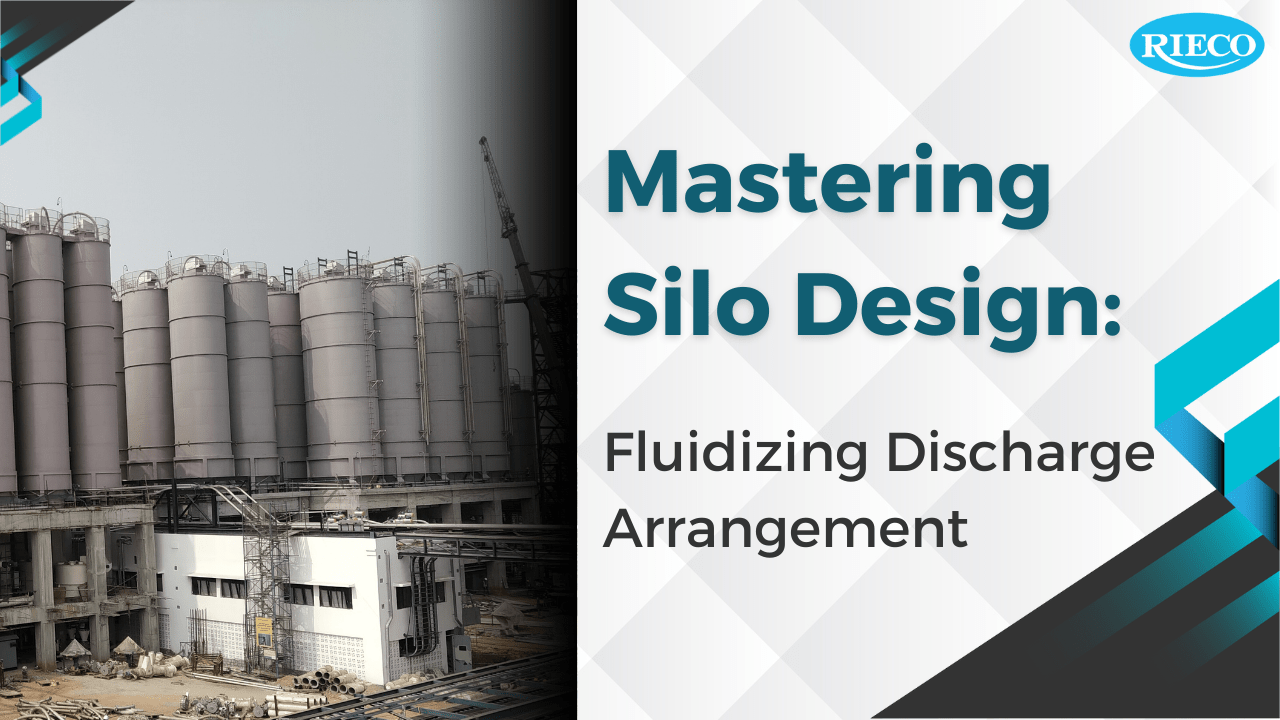- Industries
- Solutions
- Products
- Our Company
- Knowledge
- Contact Us

Mastering Silo Design: Fluidizing Discharge Arrangement

In industries where bulk materials are stored and processed, proper handling and management of these materials are crucial to ensure smooth and efficient operations. Silos are commonly used to store the Raw Material for industries like paints, cement, grains, and other granular or powder products. Fluidizing silo discharge arrangement is a widely used technique to ensure efficient discharge of Raw Materials from Silos. This technique is mainly used for Powders having moderate to good air retention capability, eliminating issues like bridging, rat-holing, and segregation, which are common challenges in traditional silo discharge systems.
Fluidization is a process that involves transforming a solid material into a fluid-like state by passing gas, typically air, through it. This is achieved by applying an upward force on the particles of the bulk material, which counteracts the downward gravitational force.

As a result, the particles start to move freely and exhibit fluid-like behavior, thus allowing for the efficient flow and discharge of the material from the silo.
A fluidizing silo discharge arrangement typically consists of the following components:
Silo: The storage container for the bulk material, designed to accommodate the fluidizing system.
Fluidizing media: A porous material, usually a fabric or a sintered metal, that allows for the passage of air while preventing the bulk material from passing through. The fluidizing media is placed at the bottom of the silo in the form of panels, cones, or discs, depending on the silo geometry and properties of raw material stored in the silo.
Air distribution system: This system supplies the air required for fluidization. It consists of either a blower or low pressure compressed air. In case of compressed air system, we need to install the air filters, pressure regulators, a network of pipes and valves that distribute the air to the fluidizing media which is required for the both the arrangements. Combination pulsating active zones can also be designed based on requirement.
Discharge valve: A valve located at the bottom of the silo that controls the discharge rate of the fluidized material. Example- Rotary Airlock Valve and specially designed Silo Discharge Valves.
Control system: A system that monitors and controls the various components of the fluidizing silo discharge arrangement to ensure optimal operation.

When the discharge process begins, the control system activates the air distribution system. Air is supplied to the fluidizing media at a controlled pressure, which then diffuses the air evenly across the bulk material. This creates a fluidized bed of material that flows smoothly towards the discharge valve.
The discharge rate can be controlled by adjusting the air pressure and flow rate, as well as the metering thru the discharge valve. The fluidized material flows out of the silo through the discharge valve, and the process continues until the desired amount of material has been discharged.

Improved flow properties: Fluidization ensures smooth and uniform discharge of bulk materials, eliminating problems like bridging, rat-holing, and segregation.
Better material quality: Fluidization helps to maintain the quality of the material by preventing segregation of particles with different sizes or densities.
Reduced wear and tear: Since the material flows more smoothly, there is less wear and tear on the silo walls and discharge equipment.
Energy-efficient: The process of fluidization requires relatively low energy consumption.
Easy control: The discharge rate can be easily controlled by adjusting the air pressure and flow rate, as well as the opening of the discharge valve, allowing for precise control of the material flow.
To conclude, fluidizing silo discharge arrangement is a highly effective method for discharging bulk materials from silos, offering numerous advantages over traditional discharge methods. The fluidization process ensures smooth and efficient material flow, reduces wear and tear on equipment, and allows for precise control of the discharge rate. As a result, fluidizing silo discharge arrangements are widely adopted in various industries for handling granular and powder materials. Stay tuned for our next blogs on types of silo discharge arrangements like . Connect with us at [email protected]

